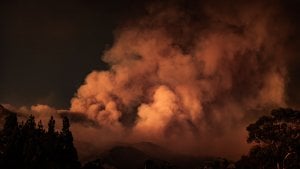California Wildfires: A Growing Crisis

California has long been synonymous with sunshine, beaches, and scenic landscapes. However, in recent years, it has also become known for devastating wildfires that sweep across the state, leaving destruction and heartbreak in their wake. The present wildfire season has once again brought the urgent issue of wildfire management and climate change to the forefront of public discourse.
The Scale of the Problem
Wildfires in California have been intensifying due to a combination of factors, including prolonged droughts, rising temperatures, and increased vegetation dryness. According to the California Department of Forestry and Fire Protection (Cal Fire), over [insert updated statistic] acres have already burned this season, with several fires still raging. The impact on human lives, wildlife, and infrastructure is staggering, with thousands of residents forced to evacuate, homes destroyed, and ecosystems disrupted.
Causes and Contributing Factors
The primary drivers of California’s wildfires include:
- Climate Change: Rising global temperatures have extended fire seasons and increased the frequency of extreme weather events, such as heatwaves and droughts.
- Forest Mismanagement: Decades of fire suppression policies have allowed flammable underbrush to accumulate, creating a tinderbox effect.
- Urban Expansion: As urban areas encroach on wildland, the risk of human-caused fires has grown, along with the potential for property damage.
- Utility Equipment Failures: Faulty power lines and electrical equipment have been identified as ignition sources in several high-profile fires.
The Human Cost
The human toll of wildfires is immense. Communities face not only the immediate threat of flames but also long-term challenges such as displacement, economic loss, and health issues stemming from smoke inhalation. Vulnerable populations, including the elderly, low-income families, and those with pre-existing health conditions, are particularly at risk.
Efforts to Combat the Crisis
California has been ramping up efforts to address its wildfire crisis through a combination of prevention, mitigation, and emergency response strategies. Key initiatives include:
- Fuel Reduction Projects: Clearing vegetation and conducting controlled burns to reduce the amount of combustible material.
- Infrastructure Upgrades: Utilities are investing in safer equipment and technology to minimize the risk of fire ignitions.
- Public Awareness Campaigns: Educating residents about fire safety and evacuation protocols.
- Legislation and Funding: State and federal governments have allocated billions of dollars to firefighting resources, disaster recovery, and climate resilience projects.
The Role of Technology
Innovations in technology are playing an increasingly vital role in wildfire management. Drones, satellite imagery, and AI-driven predictive models are being used to detect fires early, map their spread, and optimize resource allocation. These advancements could prove critical in minimizing future damage.
Looking Ahead
While progress is being made, the road to a fire-resilient California is long and fraught with challenges. Addressing the root causes of wildfires will require a concerted effort involving government agencies, private sector stakeholders, and local communities. Moreover, tackling climate change on a global scale remains essential to mitigating the long-term risks.
As California continues to battle its wildfire crisis, the resilience and determination of its people stand as a testament to the human spirit. However, the urgency of the situation cannot be overstated. Only through collective action and sustained commitment can the state hope to safeguard its future from the ravages of wildfire.
Newer Articles
- Honda Unveils Its 0 Series EVs
- Nearly 700,000 Tesla Vehicles Recalled for Tire Pressure System Concern
- Decoding the Tactics of Online Romance Scammers

